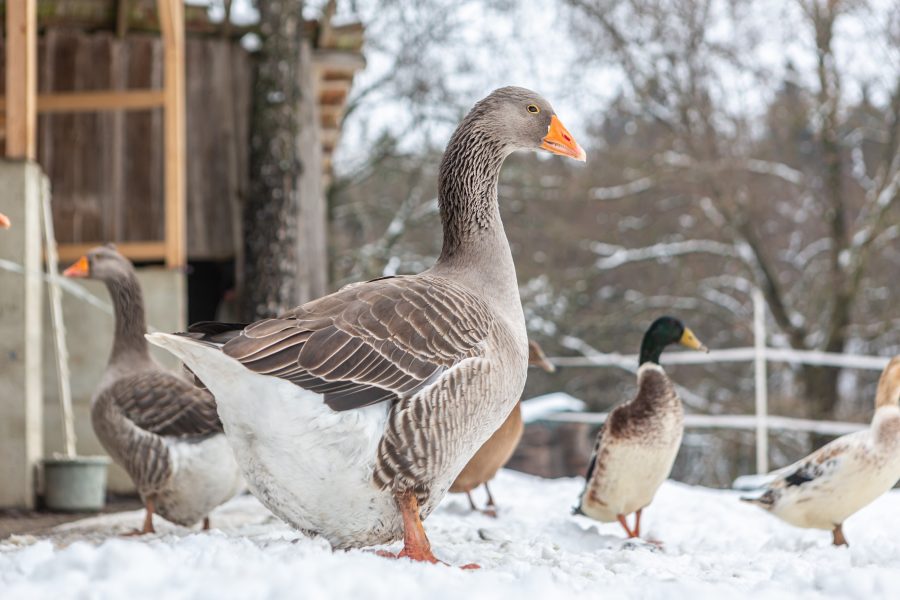Lisa Mancell, National Sales Coordinator at Farmgate, gives her advice on the importance of nutrition for healthy ducks and geese.
As we reach the festive season many of us will be enjoying plentiful and delicious goose meat on Christmas Day or the richness that duck eggs can offer to a festive bake.
Well, if you’re thinking that 2024 might be the time to add some new feathered friends to your smallholding but you need a ‘getting started’ guide, then you’ve found the right place.
The first thing to note for a keen hen keeper is ducks and geese are very different. Hens are quite easy-going whereas ducks can be compared to rowdy teenagers requiring a bit more work especially when it comes to bedtime routines!
Geese, on the other hand, can be quite useful ‘guard dogs’ as they will typically make a vocal greeting to any visitors. Differences aside, they will all get on like a house on fire in the day but need separate housing and nutrition.
DUCKS AND GEESE HAVE DIFFERENT NUTRITIONAL REQUIREMENTS TO CHICKENS
Like chickens, ducks and geese need a feed that’s suitable for their species, age and breed. Ducks spend much of their time feeding in and around water, whereas geese spend far more time grazing, so you’ll need to give them plenty of grass.
Feeding ducks and geese, the right feed at the right time in proper amounts is crucial to their overall health and egg production capacity. Although a natural diet won’t harm them when they are not required for eggs or meat and have access to good foraging where they can find invertebrates.
Perhaps the most important thing to understand about ducks is that they are voracious omnivores. Just like chickens, ducks will need and heavily forage for ample sources of protein. A significant portion of a healthy egg-laying duck hen’s diet should be composed of both protein and calcium. Without a source of calcium to create an eggshell, a bird will not lay.
Geese are quite different to most other poultry in that they are grazers and once started on a compound diet, soon prefer to be on grass pasture. A little supplementary cereal or compound feed can be provided according to the abundance of grazing, and birds reared for the table are often brought indoors for the final few weeks finishing on a compound diet to help develop the best carcass presentation.
This article extract was taken from Practical Poultry, in the December 2023 edition of The Country Smallholder. To read the article in full you can buy the issue here.
To receive regular copies of The Country Smallholder magazine featuring more articles like this, subscribe here.
For FREE updates from the world of smallholding, sign up for The Country Smallholder newsletter here.








